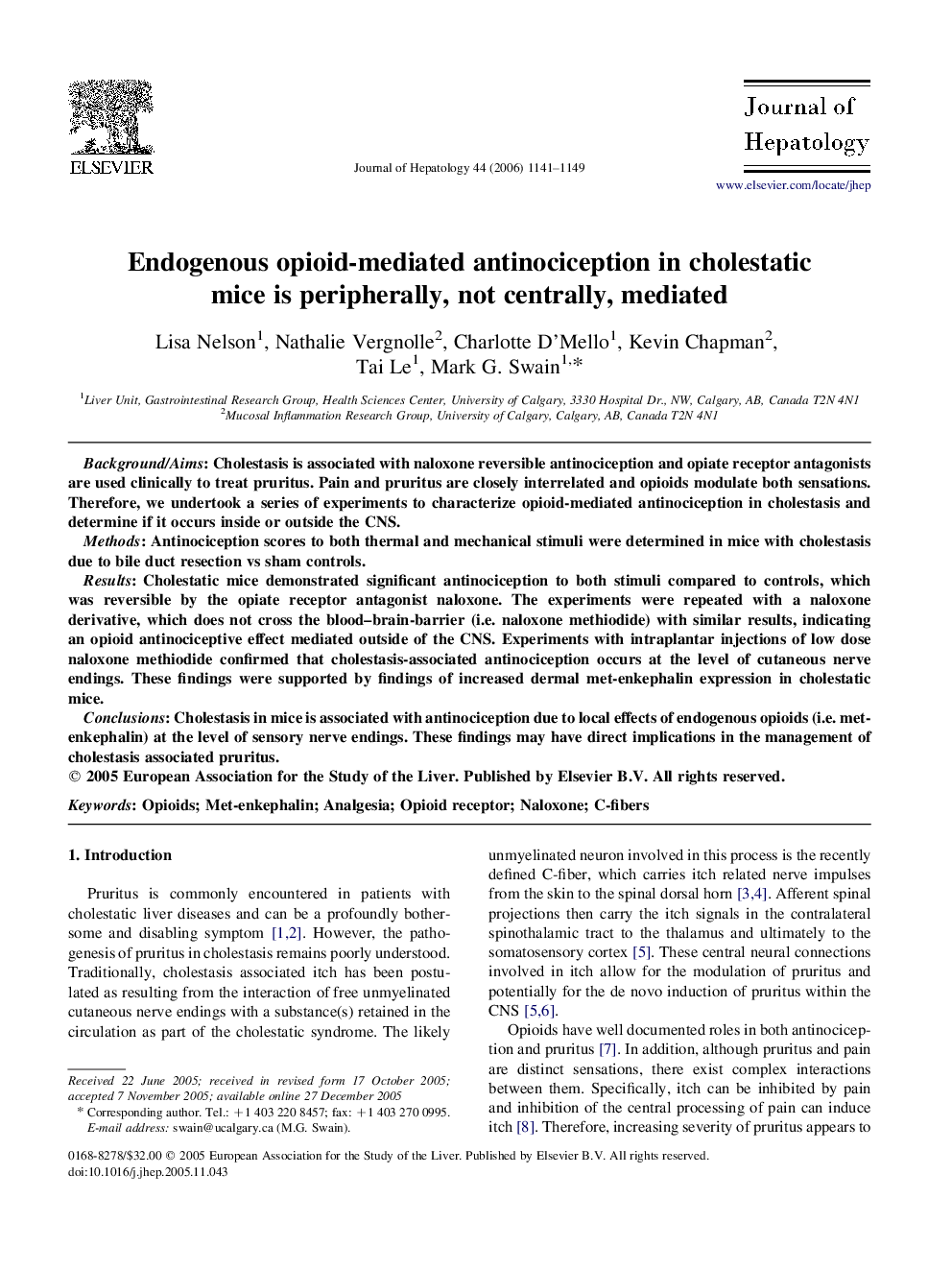| Article ID | Journal | Published Year | Pages | File Type |
|---|---|---|---|---|
| 3315625 | Journal of Hepatology | 2006 | 9 Pages |
Background/AimsCholestasis is associated with naloxone reversible antinociception and opiate receptor antagonists are used clinically to treat pruritus. Pain and pruritus are closely interrelated and opioids modulate both sensations. Therefore, we undertook a series of experiments to characterize opioid-mediated antinociception in cholestasis and determine if it occurs inside or outside the CNS.MethodsAntinociception scores to both thermal and mechanical stimuli were determined in mice with cholestasis due to bile duct resection vs sham controls.ResultsCholestatic mice demonstrated significant antinociception to both stimuli compared to controls, which was reversible by the opiate receptor antagonist naloxone. The experiments were repeated with a naloxone derivative, which does not cross the blood–brain-barrier (i.e. naloxone methiodide) with similar results, indicating an opioid antinociceptive effect mediated outside of the CNS. Experiments with intraplantar injections of low dose naloxone methiodide confirmed that cholestasis-associated antinociception occurs at the level of cutaneous nerve endings. These findings were supported by findings of increased dermal met-enkephalin expression in cholestatic mice.ConclusionsCholestasis in mice is associated with antinociception due to local effects of endogenous opioids (i.e. met-enkephalin) at the level of sensory nerve endings. These findings may have direct implications in the management of cholestasis associated pruritus.
